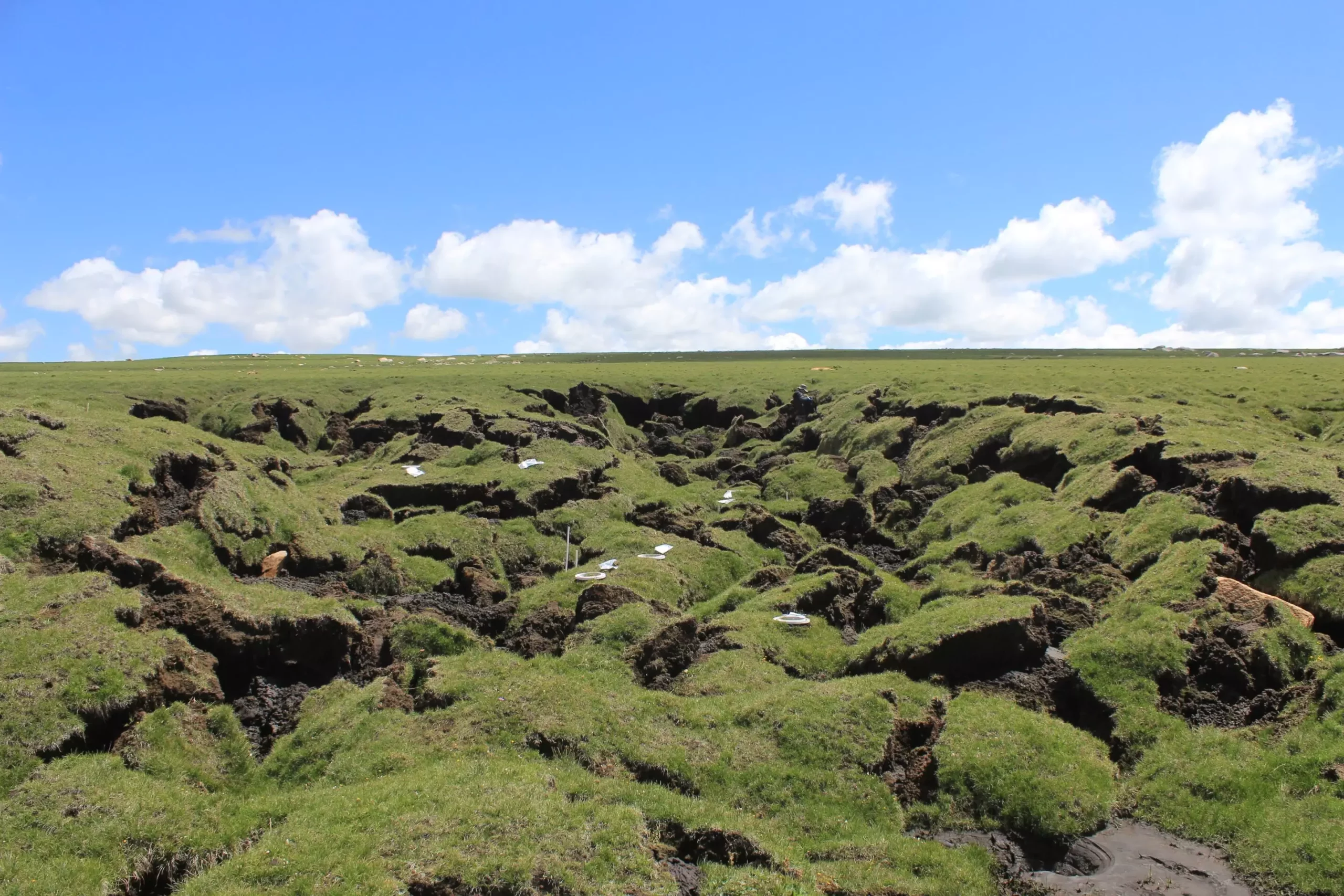A recent study published in Nature Geoscience has shed light on the sensitivity of soil carbon dioxide (CO2) emissions to climate warming in permafrost-collapsed areas compared to non-collapsed areas. With the rapid thawing of permafrost in high-latitude and high-altitude regions due to warmer temperatures, it is crucial to understand the implications of this phenomenon on ecosystem carbon cycling.
The research, led by Prof. Yang Yuanhe from the Institute of Botany of the Chinese Academy of Sciences, conducted a series of field warming experiments and soil incubation studies to investigate the impact of thermokarst formation on soil CO2 fluxes. The results revealed that soil CO2 release increased by 5.5 times in thermokarst features compared to non-thermokarst areas in response to climate warming.
The study identified lower soil substrate quality and a higher abundance of microbial functional genes related to organic carbon decomposition as key factors contributing to the stronger warming response in thermokarst-affected soils. Through in-depth soil physicochemical analyses and metagenomic sequencing, the researchers were able to pinpoint the mechanisms driving the increased soil CO2 emissions in these areas.
By extrapolating the findings to all upland thermokarst regions in the Northern Hemisphere, the study estimates an additional 0.4 Pg C year-1 of soil carbon release due to climate warming. This represents a significant contribution to projected permafrost soil carbon losses by the end of the 21st century and highlights the importance of considering thermokarst formation in climate change projections.
The study provides valuable insights into the complex relationship between climate warming, permafrost thawing, and soil CO2 emissions in different landscape types. By understanding the mechanisms driving the increased sensitivity of soil CO2 flux in thermokarst areas, researchers can better predict the future trajectory of permafrost carbon-climate feedback and develop strategies to mitigate its impacts on the environment.



Leave a Reply